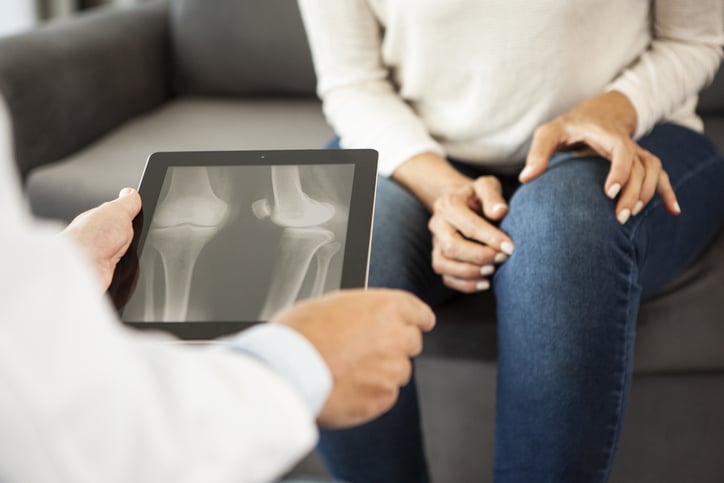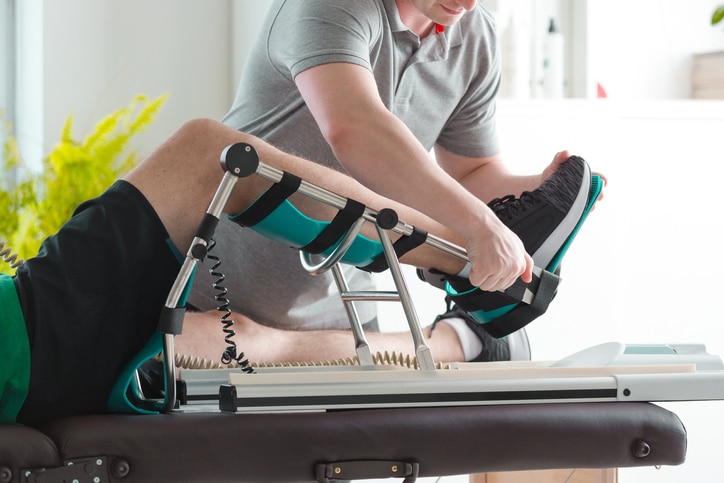Not long ago, getting a new knee or hip was a rite of passage traditionally reserved for retirement and beyond, but joint replacement has become increasingly popular among patients in their 40s and 50s — and sometimes even younger.
“I’ve had a patient in his 20s return to competitive break dancing and even qualify for the Marine Corps after a revision hip replacement,” says Mo Halawi, MD, chief of hip and knee reconstructive surgery at Methodist Dallas Medical Center.
In years past, an elderly patient seeking a new joint might hope to return to gardening or visiting the grocery store again. But for younger patients, returning to “normal” typically means far more physical activity, whether for a job or for recreation.
HOW LONG WILL IT LAST?
Younger patients should understand that a new hip or knee can make a big difference in their quality of life, but there is a tradeoff: The artificial joint may not last as long or provide the same feeling as the joint they were born with.
“It’s important to have an honest conversation with patients,” Dr. Halawi says, “to make sure they understand their new knee or hip may not deliver the full functional capacity as the native joint.”
Patients in their 40s and 50s may outlive their new joint because on average, a new hip or knee will last 10 to 15 years, according to the American Academy of Orthopedic Surgeons. That lifespan may be plenty for older patients. However, a younger and more physically active patient should be aware that they may require revision surgery in the future. A revision is when a surgeon replaces some or all of the replacement joint with new parts.
“There certainly have been improvements in the ‘wear rates’ of materials used in joint replacement, meaning that the implants will last longer,” Dr. Halawi says. “But we don’t have sufficient long-term data on how long younger patients can expect their new joints to last.”

MANAGING EXPECTATIONS
The first step in any initial consultation with a patient seeking relief from hip or knee pain is discussing more conservative alternatives to surgery.
“Surgery should only be considered after a patient has tried the evidence-based treatments available and has found inadequate relief,” Dr. Halawi says.
When a young patient exhausts other means of relief and their quality of life is still lacking, Dr. Halawi considers them a candidate for a hip or knee replacement.
“Someone is ready for surgery when the quality of their life has deteriorated beyond an acceptable point for them,” he says.
Some patients may be eligible for a partial replacement, which salvages the functional parts of the joint.
“I’m a fan of partial joint replacement, especially for younger patients,” Dr. Halawi says. “When you leave some of the native joint behind, that gives you a more natural feel.”
RECOVERY TIMES VARY
Recovery times for total knee and hip replacements were once measured in months, but now same-day surgery is more common and younger patients are often walking on their own immediately after surgery.
“I’m a proponent of minimally invasive surgery and rapid recovery protocols,” Dr. Halawi says. “Most of my patients, whether they’re old or young, can expect same-day surgery. Within an hour or two of waking up from anesthesia, they can be walking out the door to recover in the comfort of their own home.”
Within two weeks, the majority of patients are walking without assistive devices. After a month of selected exercises, they are walking without a limp.
“Six weeks after surgery, they’re pretty much ready to graduate,” Dr. Halawi says.

EXCEEDING EXPECTATIONS
There are a number of reasons why younger patients may find themselves considering joint replacement surgery.
Some might be struggling to overcome a car crash or sports injury that caused chronic knee or hip inflammation — what’s called post-traumatic arthritis. Others may suffer from developmental disorders leading to early joint degeneration.
In any case, it’s critical for a patient to understand the limits of an artificial hip or knee. Getting back to the gym or a daily jog may be more realistic, for example, than running a marathon or playing contact sports.
But for most patients who have lived with a painful joint for months or years, simply relieving that daily agony is just what the doctor ordered.
“I go home happy when I see a patient able to resume what is important for them after a joint replacement surgery,” Dr. Halawi says. “And for a young patient with a career, a family, or promising future ahead of them, that joy is amplified.”








